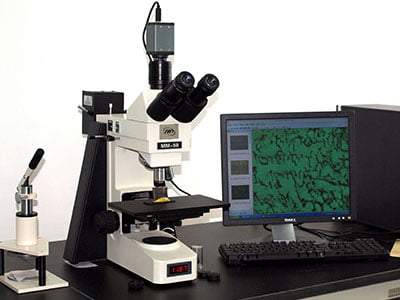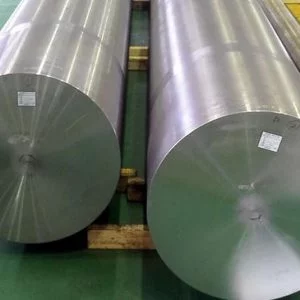Welcome to My Blog!
Before we dive into the content, I’d love for you to join me on my social media platforms where I share more insights, engage with the community, and post updates. Here’s how you can connect with me:
Facebook:https://www.facebook.com/profile.php?id=100071234835011
LinkedIn:https://www.linkedin.com/company/74943205/admin/dashboard/
YouTube:https://www.youtube.com/@shandongexpertmedicalequip4695
TikTok:https://www.tiktok.com/@expertmedical
Now, let’s get started on our journey together. I hope you find the content here insightful, engaging, and valuable.
Introduction
When it comes to welding steel, ensuring that the material is properly tested is a critical step in maintaining safety, quality, and long-term durability. Understanding how to test steel for welding is essential for any construction, manufacturing, or fabrication project. Proper testing allows you to determine whether the steel is suitable for welding, meets the necessary standards, and will perform well under various conditions.
In this comprehensive guide, we’ll explore the key procedures for testing steel before welding, including hardness, strength, and composition analysis. You will also learn about the importance of these tests and how they can impact the success of your welding project.
Why Testing Steel for Welding is Important

Welding requires precise control over both the material and the conditions under which the weld occurs. Testing steel ensures that the material will behave as expected during the welding process. Without proper testing, the weld may fail, resulting in costly repairs, safety risks, and potential structural issues.
Key reasons for testing steel before welding include:
- Ensuring the steel’s mechanical properties are suitable for the project.
- Verifying the steel’s chemical composition to avoid weld defects.
- Identifying any potential weaknesses or impurities that could affect weld strength.
- Meeting industry standards and regulatory requirements.
By following established testing procedures, welders and engineers can prevent these issues, improving the quality and reliability of their projects.
Common Methods for Testing Steel for Welding
Tensile Strength Testing
Tensile strength testing is one of the most common ways to assess the strength of steel. This test measures the amount of force the steel can withstand before breaking. For welding, it’s crucial to know the tensile strength of the steel to ensure that it can handle the stresses and strains of the welding process without cracking or breaking.
Tensile strength testing involves pulling a sample of steel in a testing machine until it fractures. The data obtained helps to determine whether the steel is strong enough for the intended welding project.
Applications:
- Structural steelwork
- Pressure vessels
- Bridges and large buildings
Hardness Testing
Hardness testing measures the steel’s resistance to deformation, which is an important factor in welding. Different hardness tests can be conducted, including the Rockwell, Brinell, and Vickers methods. The hardness of steel affects how it responds to welding heat and pressure.
Hardness testing is important because softer steel may deform under welding heat, while excessively hard steel could become brittle and crack.
Common Hardness Tests:
- Rockwell Hardness Test: Measures depth of indentation under load.
- Brinell Hardness Test: Measures diameter of indentation left by a hardened steel ball.
- Vickers Hardness Test: Uses a diamond pyramid to assess indentation hardness.
Chemical Composition Testing
Understanding the chemical composition of the steel is essential for predicting how it will behave during welding. The presence of elements such as carbon, sulfur, and phosphorus can significantly affect weldability. For example, high carbon content can make the steel more brittle and harder to weld.
Chemical composition testing is usually conducted using a spectrometer, which analyzes the elements within the steel sample. This test helps ensure the steel meets industry standards and has the appropriate chemical properties for welding.
Key Elements Tested:
- Carbon (C)
- Manganese (Mn)
- Silicon (Si)
- Phosphorus (P)
- Sulfur (S)
Impact Testing
Impact testing, also known as Charpy or Izod testing, measures the toughness of steel—its ability to absorb energy without fracturing. This test is crucial for welding projects in environments where the steel will face sudden impacts or fluctuating temperatures. Impact testing is especially important in industries such as automotive manufacturing and shipbuilding.
During the impact test, a sample of steel is struck with a hammer on a pendulum, and the energy absorbed by the steel is measured. Higher energy absorption indicates greater toughness.
Ultrasonic Testing
Ultrasonic testing (UT) is a non-destructive testing (NDT) method used to detect internal flaws in the steel that may not be visible on the surface. This technique uses high-frequency sound waves to penetrate the steel and identify any cracks, voids, or inclusions that could affect the weld’s quality.
Ultrasonic testing is particularly useful in critical applications where steel integrity is vital, such as in pipelines, pressure vessels, and large structural welds.
Table: Overview of Common Steel Testing Methods for Welding
The table below summarizes the most commonly used methods for testing steel before welding and their key applications:
| Test Type | Purpose | Application | Test Method |
|---|---|---|---|
| Tensile Strength Testing | Measure how much force steel can withstand | Structural steel, pressure vessels | Tensile testing machine |
| Hardness Testing | Assess steel’s resistance to deformation | Construction, heavy machinery | Rockwell, Brinell, Vickers |
| Chemical Composition Testing | Determine steel’s elemental makeup | Welding quality control, material selection | Spectrometer analysis |
| Impact Testing | Measure steel’s toughness | Automotive, shipbuilding, cold environments | Charpy or Izod testing |
| Ultrasonic Testing | Detect internal flaws in steel | Pipelines, pressure vessels, structural welds | High-frequency ultrasonic waves |
How to Test Steel for Welding: Step-by-Step Guide

Prepare the Steel Sample
Before testing, the steel sample must be prepared according to the required specifications. For tensile and impact testing, a standardized sample size is often used. In chemical composition testing, a small sample of steel is enough for analysis. Ultrasonic testing typically doesn’t require material removal, as it’s a non-destructive method.
Conduct Tensile Strength Testing
Using a tensile strength testing machine, pull the steel sample until it fractures. Record the force applied to determine the steel’s maximum tensile strength. This will provide valuable information about whether the steel can withstand the welding process.
Perform Hardness Testing
Choose the appropriate hardness testing method based on the steel type and application. Rockwell, Brinell, or Vickers hardness tests will provide insight into the steel’s ability to resist deformation during and after welding.
Analyze Chemical Composition
Run the steel sample through a spectrometer to analyze its chemical composition. Ensure that the steel meets the necessary specifications for carbon, manganese, sulfur, and other key elements, which can impact weldability.
Conduct Impact Testing
Perform Charpy or Izod impact testing to determine the steel’s toughness. This test is particularly important for welding projects where the steel may face extreme temperature changes or sudden impacts.
Utilize Ultrasonic Testing
Conduct ultrasonic testing to check for any internal flaws within the steel that may not be visible on the surface. This test is vital for ensuring the steel’s integrity before welding begins.
Conclusion
Testing steel before welding is a vital process that helps ensure the success of any welding project. Understanding the various testing methods, from tensile strength to ultrasonic testing, allows you to determine the steel’s suitability for your specific needs. By following the appropriate procedures, you can avoid potential weld failures, improve quality, and ensure long-term durability.
Whether you’re working on a large infrastructure project or a small-scale fabrication, knowing how to test steel for welding can save time, money, and resources.
FAQ
Why is tensile strength testing important for welding steel?
Tensile strength testing measures how much force the steel can withstand before breaking, helping to ensure that the material is strong enough for the welding process.
How does hardness testing affect welding?
Hardness testing measures the steel’s resistance to deformation. Softer steel may warp during welding, while hard steel can become brittle and crack under stress.
What role does chemical composition play in welding steel?
Chemical composition testing ensures that the steel contains the appropriate levels of carbon, manganese, and other elements. High carbon content, for example, can make steel brittle and difficult to weld.
When should I use ultrasonic testing?
Ultrasonic testing is ideal for detecting internal flaws that might compromise the weld, making it essential for critical applications such as pipelines and structural steelwork.
What is the purpose of impact testing in welding?
Impact testing measures the steel’s toughness, ensuring it can withstand sudden impacts or temperature changes without fracturing. This is especially important for projects in extreme environments.
